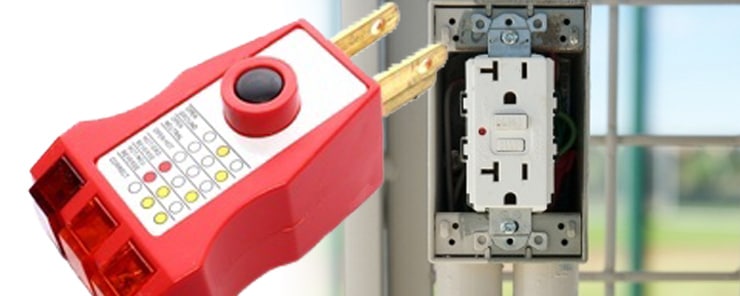Have you ever wondered if power is actually reaching your outlet? Or plugged in an appliance or device to discover it simply doesn’t work? Or worse, have you ever set up a new entertainment center or lighting fixture only to discover the nearby outlet is shot? Luckily, there’s an easy way to avoid that heartache. Here’s a step-by-step guide on how to test an outlet.
What you’ll need: A multitester or multimeter.
How to test an outlet
First, get your multimeter. If you don’t have one, stop by your local hardware store. They can help you find exactly what you need. We recommend an auto-ranging multimeter. Properly used, a multimeter can help you determine which cable feeds your outlet with power, if the wires are wired incorrectly or if the receptacle is properly grounded. Plus, it can be a helpful tool in the ongoing electric maintenance of your home.
Once you have your multimeter, set it to AC Voltage or VAC. It’s important to remember the maximum voltage for an average household is 120 volts. Be sure you set your dial accordingly. If necessary, connect the probes to the proper inputs (Voltage for red, COM for black.)
Before inserting the probes into your outlet, remember that the power to your home is on for these procedures. Proceed with extreme caution. Any electrical test or work can be incredibly dangerous, and if you feel uncomfortable performing these tests, contact your local electrician for help and guidance. If you feel comfortable proceeding, remember to hold both probes in one hand, in case of an accident. This prevents electrical currents from passing through your body. It also allows you to hold the reader in one hand and the probes in the other.
Insert the probes into your outlet, red into the right side and black into the left. A properly functioning outlet should read between 110 and 120 volts. If there is no reading, check the wiring or call your local electrician.
You can also check if you have a blown fuse or tripped circuit breaker by removing the black probe and placing it in the oval slot of your outlet. If there is no reading, one of the former issues could be your problem.
Finally, place one probe in the wider slot and the other on the round screw in the middle of the outlet. The result should be zero voltage.
If you need help determining the cause of your outlet issues, give Shockley Electric a call. We’re happy to help our clients, from big to small.

